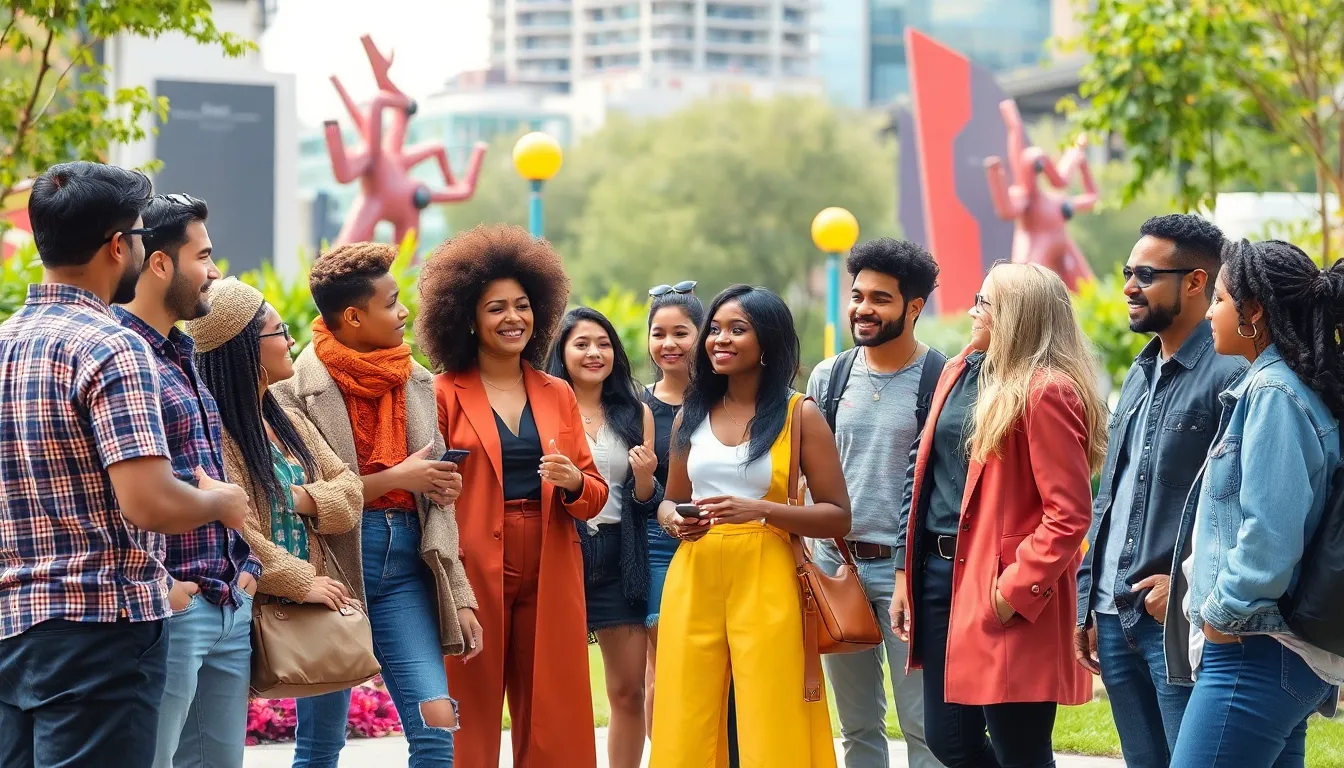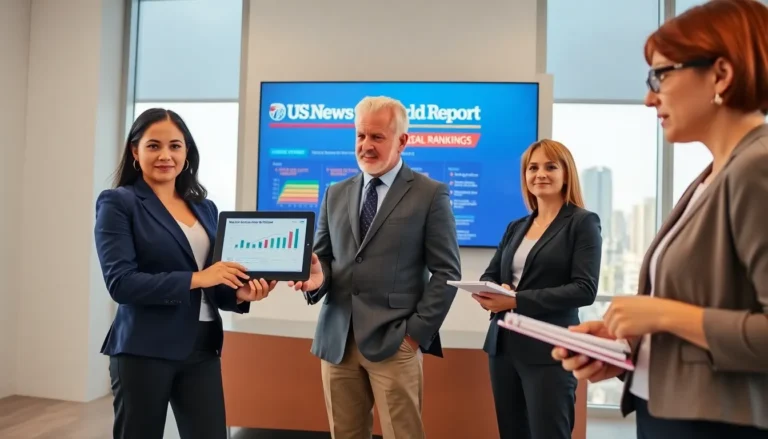In a world where cultures clash and blend like a smoothie gone rogue, understanding the intricacies of cultural dynamics is more important than ever. A cultural report serves as a compass, guiding individuals and organizations through the vibrant tapestry of human expression. Whether it’s deciphering the latest TikTok trends or analyzing the impact of global events on local customs, these reports offer a treasure trove of insights.
Table of Contents
ToggleOverview of Cultural Reports
Cultural reports play a crucial role in understanding the intricacies of cultural dynamics. These reports deliver insights into human expression, reflecting social media impacts and local customs shaped by global events.
Importance of Cultural Reports
Cultural reports enhance awareness of societal trends. They guide organizations in aligning their strategies with community values. Furthermore, these reports support dialogue around specific cultural issues, fostering inclusivity. By analyzing various factors, stakeholders can make informed decisions that promote cultural understanding. Businesses often rely on cultural reports to tailor their products and services to meet diverse customer needs.
Key Components of a Cultural Report
A well-structured cultural report includes several key elements. First, demographic analysis identifies significant characteristics of target populations. Second, it examines prevailing cultural trends and their implications. Additionally, the report highlights major events that influence cultural shifts, providing context for analysis. Qualitative data, such as interviews or surveys, enhances understanding of community perspectives. Finally, recommendations based on the findings allow for strategic planning and effective engagement.
Understanding Cultural Context

Cultural context involves examining the historical, societal, and environmental factors that shape a community’s beliefs and behaviors. This understanding allows organizations to navigate cultural nuances effectively.
Historical Background
Historical events, including colonization and migration, significantly impact cultural evolution. Global conflicts, such as wars and economic crises, have led to shifts in cultural identities. Cultural traditions often reflect these historical experiences, influencing values and practices. For example, the legacies of colonialism have shaped art forms and language use in many regions. Knowledge of true historical contexts deepens the understanding of current cultural dynamics, promoting more meaningful engagement.
Societal Influences
Societal norms and values guide behaviors and attitudes within communities. The rise of social media has transformed how individuals interact, creating new cultural landscapes. Fashion trends and digital communication methods can reflect broader societal changes. For instance, movements advocating for social justice impact cultural expressions in art and music. Trusting these influences helps businesses and organizations connect with their target audiences, fostering stronger relationships and enhancing brand loyalty. Understanding societal influences is essential for meaningful cultural engagement.
Methodologies in Cultural Reporting
Cultural reporting employs various methodologies to analyze and interpret cultural dynamics. Employing both qualitative and quantitative approaches allows for a comprehensive understanding of cultural insights.
Qualitative vs. Quantitative Approaches
Qualitative approaches emphasize in-depth perspectives from individuals and communities. This method captures rich narratives and personal experiences, revealing the emotional and social dimensions of culture. Quantitative approaches, however, involve numerical data that provide measurable insights. Utilizing surveys and statistical analysis enables researchers to identify trends and correlations within cultural phenomena. Both methodologies complement each other by offering a holistic view, addressing the complexity of cultural expressions and societal influences.
Data Collection Techniques
Data collection techniques in cultural reporting vary widely, encompassing interviews, focus groups, and surveys. Interviews allow for personal stories that deepen understanding of cultural contexts. Focus groups facilitate discussions among community members, generating diverse viewpoints. Surveys gather large amounts of data quickly, enabling a broader analysis of cultural trends. Observational methods also provide real-time insights into behaviors and interactions within communities. Each technique contributes uniquely to the richness of cultural reports, ensuring that multiple perspectives inform the final analysis.
Case Studies of Effective Cultural Reports
Cultural reports demonstrate the power of context in shaping understanding. Successful examples abound across various regions, highlighting unique insights into diverse cultural landscapes.
Successful Reports from Various Regions
In North America, a cultural report from the Pew Research Center examined the impact of immigration on local traditions, showcasing shifts in community values. Similarly, a report from the Australian Bureau of Statistics explored indigenous cultural expressions, illustrating their influence on national identity. In Europe, the European Cultural Foundation produced a report on cultural participation, revealing the connections between arts engagement and social cohesion. Each report used regional data to provide tailored insights, assisting organizations in aligning with community expectations.
Lessons Learned from Notable Examples
Analyzing notable cultural reports offers valuable lessons. A case study from the UK demonstrated the importance of community involvement, which enriched the data collected through focus groups. A report focusing on the arts in South Africa highlighted the necessity of incorporating local narratives, making the findings more relatable. In Canada, an accessibility report showcased how addressing barriers led to increased participation in cultural events. Collectively, these examples emphasize the significance of inclusivity and representative methodologies in crafting effective cultural reports.
Challenges in Cultural Reporting
Cultural reporting faces several challenges that can impact its effectiveness. Addressing these issues is crucial for delivering accurate and insightful reports.
Bias and Subjectivity
Bias and subjectivity often skew cultural reporting. Individual perspectives shape interpretations, leading to misrepresentations of cultural realities. Reporters may unintentionally prioritize certain viewpoints that align with their beliefs. Acknowledging diverse community narratives fosters a balanced understanding. Readers benefit when reports include multiple voices, providing a richer context. Cultural dynamics become clearer through varied perspectives, helping organizations connect meaningfully with their audiences.
Accessibility of Data
Accessibility of data presents another significant challenge in cultural reporting. Not all communities have equal representation in data sources. Limited access to existing data can hinder comprehensive analysis. Smaller or marginalized groups often lack adequate representation, affecting report accuracy. Innovative solutions, such as community-driven data collection efforts, bridge these gaps. Utilizing accessible technology can also facilitate participation in data gathering. Report quality improves when cultural insights emerge from inclusive data practices.
Cultural reports are indispensable tools in today’s interconnected world. They not only illuminate the intricacies of cultural dynamics but also empower organizations to adapt and thrive in diverse environments. By fostering an understanding of community values and societal trends, these reports enhance engagement and inclusivity.
The methodologies employed in cultural reporting ensure a rich tapestry of insights that reflect the voices of various communities. Addressing challenges like bias and representation is crucial for creating accurate and meaningful reports. As businesses and organizations continue to navigate cultural landscapes, the value of well-crafted cultural reports will only grow, driving informed decision-making and stronger connections with audiences.





